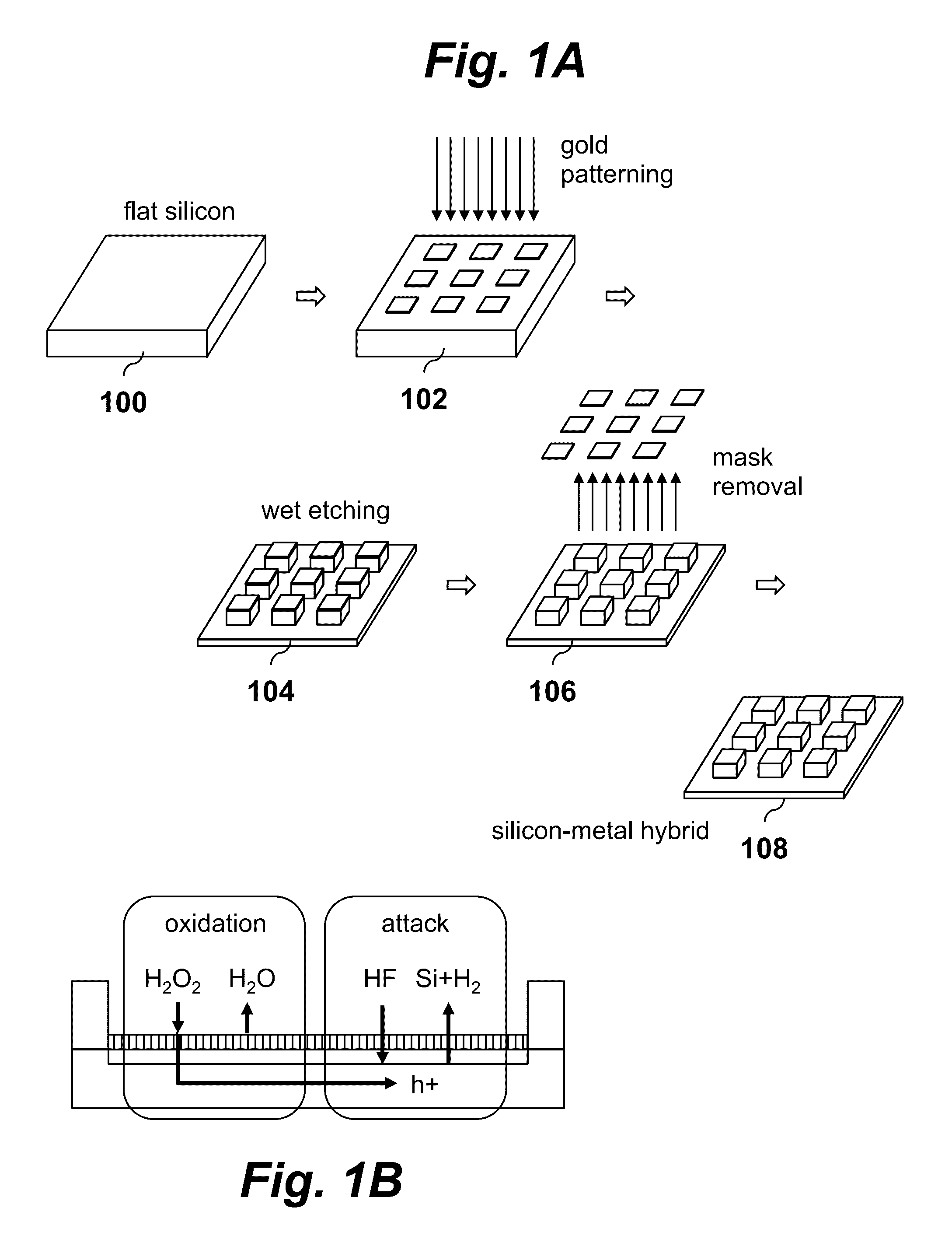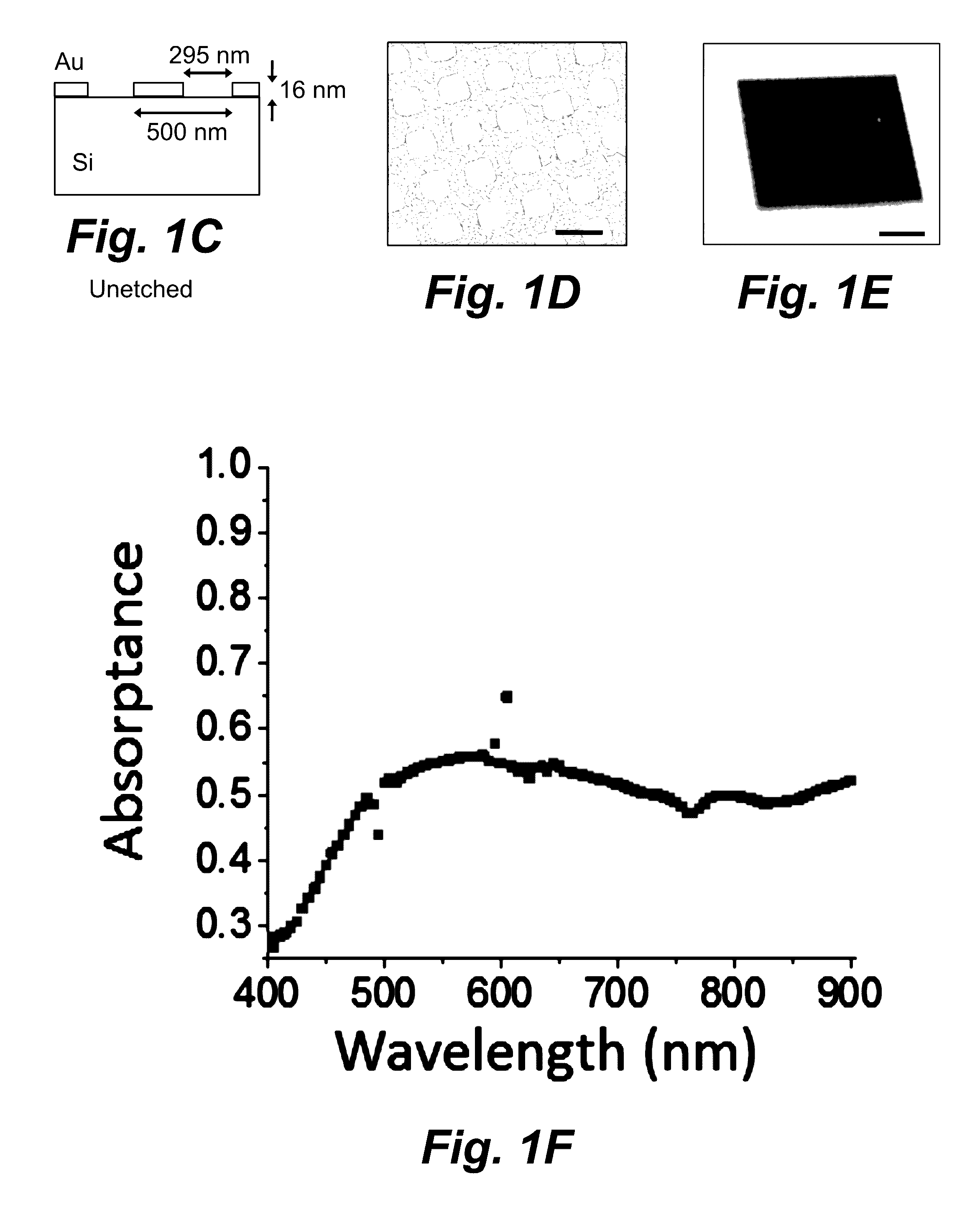Metal-dielectric hybrid surfaces as integrated optoelectronic interfaces
a technology of dielectric hybrid surfaces and optoelectronic interfaces, applied in the direction of transmission, semiconductor devices, photovoltaic energy generation, etc., can solve the problem of unrivaled performan
- Summary
- Abstract
- Description
- Claims
- Application Information
AI Technical Summary
Benefits of technology
Problems solved by technology
Method used
Image
Examples
Embodiment Construction
[0029]To maximize light coupling or absorption, optoelectronic devices typically contain light management structures of high index materials, either in an active or window layer. These could include micro- and nano-pillars, cones, wires, pyramids and inverted pyramids, spheres, shells, domes, and other geometries. These light management structures improve light coupling through gradual refractive index matching, scattering, coupling to guided modes, and photonic crystal effects.
[0030]These light management structures typically sit in close proximity to electrodes in the device which allow for electrical contact. Electrodes can be made of transparent conductors, notably oxides, which offer some conductivity while permitting light transmission through a continuous film of material. Sputtered indium-doped tin oxide (ITO) is the most common transparent conductor currently used; however, sputtering ITO evenly over highly textured surfaces can be challenging, and the thick layers needed f...
PUM
| Property | Measurement | Unit |
|---|---|---|
| wavelength bandwidth | aaaaa | aaaaa |
| thickness | aaaaa | aaaaa |
| wavelengths | aaaaa | aaaaa |
Abstract
Description
Claims
Application Information
 Login to View More
Login to View More - R&D
- Intellectual Property
- Life Sciences
- Materials
- Tech Scout
- Unparalleled Data Quality
- Higher Quality Content
- 60% Fewer Hallucinations
Browse by: Latest US Patents, China's latest patents, Technical Efficacy Thesaurus, Application Domain, Technology Topic, Popular Technical Reports.
© 2025 PatSnap. All rights reserved.Legal|Privacy policy|Modern Slavery Act Transparency Statement|Sitemap|About US| Contact US: help@patsnap.com



